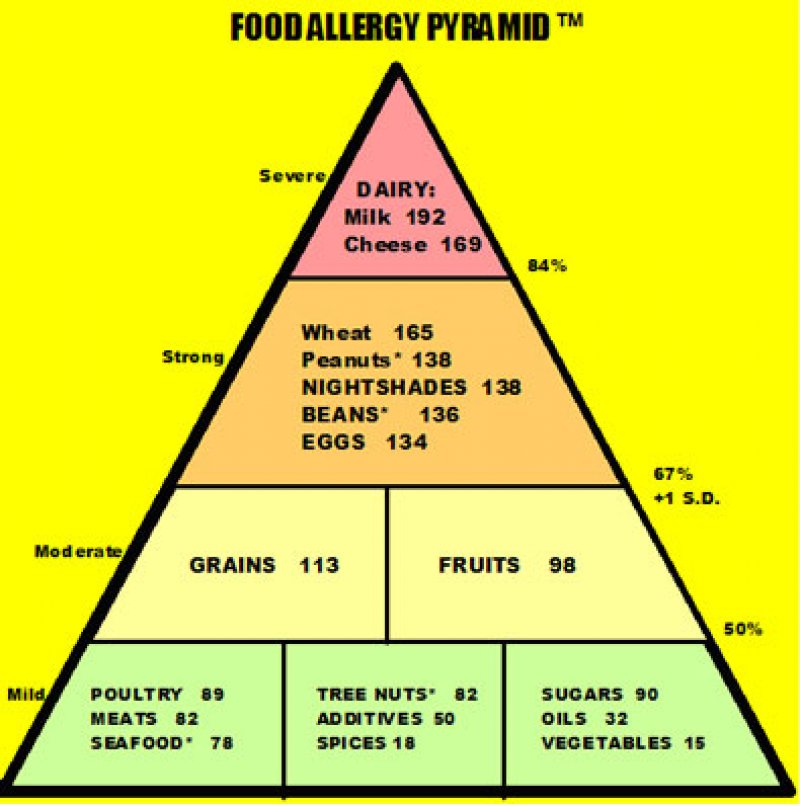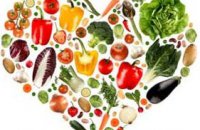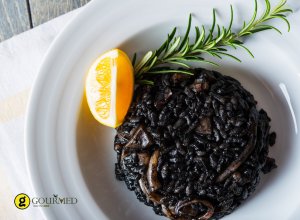-
What is a food allergy?
The term "food allergy" refers to a condition in which the body reacts to the ingestion of particular foods, the most common of which are fish, seafood, eggs, strawberries, tomatoes, nuts, chocolate and wheat. A food allergy can manifest itself in the form of a rash and acute itching, eczema, abdominal pain, vomiting and diarrhea. Quite often it is accompanied by difficulty in breathing or swelling of the eyelids, lips and tongue. -
What is food intolerance?
This is often confused with food allergy, but in fact has no direct relation to it. It is often due to a lack of enzymes in the lower digestive system, with the result that the intestine is unable to digest certain foods. For example, many adults, as well as children, have an intolerance to milk. In this case, a carbohydrate called lactose which is present in milk is not absorbed well by the intestine resulting in bloating, abdominal pain, diarrhea, etc. In addition, any food which is rejected by the stomach can be related to gastrointestinal disorders, but also to symptoms that mimic allergies such as rhinitis, inflammations, etc. -
How can I find out if I am allergic to a certain food?
The development of a reaction (i.e. a rash over the body or swelling of the tongue and lips) anywhere between a few minutes to some hours following ingestion of the suspect food is the most usual way to determine if you are allergic to that food. Also, there are certain dermatological tests that are carried out on the hand by use of a needle, which pricks the skin and transmits a variety of the allergens. This can also be done on the back by placing adhesive patches containing the allergen on it. Also, doctors often use the ‘exclusion diet,' a process in which suspect foods are removed from the diet of the sufferer for a few days and are then re-introduced, one-by-one. This can finally confirm which food is responsible for the allergic reaction. In this case, the symptoms produced by the suspect food will reappear within 24 hours. -
Can dermatological tests show with a high degree of certainty that someone is or isn’t allergic to a particular food?
The hypodermic (below the skin) administration of food allergens is of limited diagnostic value for those who display an allergic reaction to food. This is due to the fact that many people get a positive reading for certain foods through the dermatological test, but display no allergic reaction to the ingestion of the same food. -
Which foods produce the most persistent allergies?
Allergies to nuts (mainly walnuts, peanuts, hazelnuts, and almonds) are among the most persistent and general last a lifetime. In addition, peanuts are those most likely to produce a dangerous reaction, even a life-threatening one (particularly during childhood). This reaction is known as allergic or anaphylactic shock. -
What are the warning signs of allergic or anaphylactic shock?
Dizziness, a spike in blood pressure, coughing, hoarse voice, burning, irritation or itchiness in the mouth and throat. Also, itchiness all over the body accompanied by an allergic rash all over the skin. -
What should I do if I have symptoms of allergic shock?
For those who are allergic to certain foods and have already experienced one episode of anaphylaxis, doctors advise they should always have an adrenaline injection handy. This should be administered immediately if the symptoms worsen. That is, within minutes of the allergen attack causing dizziness, coughing, hoarseness of the voice and inflammation of the throat with consequent asphyxiation. Adrenaline acts immediately and is a life saver in these situations. -
Is it possible for someone who has never had a food allergy to develop one suddenly by eating something for the first time or by eating a food that has been tried before?
A food that is eaten for the first time cannot produce an allergy because the body has not had any prior contact with the allergen contained in it, and therefore, has not become accustomed to it. If, for example, you try an exotic fruit in a tropical place, that fruit can create an allergy problem the second or third time you eat it, but never the first time. Also, the body can suddenly and mysteriously become allergic to foods that are common to it and are eaten regularly, such as cheese, chicken, wine, etc. -
What’s the most effective way of dealing with a food allergy?
If the food that is causing the allergy is known, then it and its products must be completely removed from the diet of the person allergic to it. If, however, the suspect food has not been identified, your doctor may prescribe antihistamines or other medication that relieve the symptoms (inflammation and itching). -
What measures should be taken by those suffering from allergies?
Apart from avoiding the food that is causing the problem, sufferers should read the labels on all processed foods very carefully (snacks, prepared food, sweets, etc) and so exclude any food containing the one responsible for the allergy. For example, if you are allergic to corn, it’s best to avoid processed sweets and food whose labels indicate that they contain corn. In addition, those who are allergic to milk should avoid all products whose labels indicate that they contain caseine, lactose, and albumin as all of these are by-products of milk. Furthermore, people who are allergic to eggs should stay away from processed food and sweets containing meringue, as well as packaged food containing lecithin. -
Why is it that a person who is not allergic to one food type becomes sensitive to certain food combinations?
Sensitivity to certain food combinations can develop only when there is also a combination or their respective allergens. That is, only when both foods contain high levels of allergen factors that are not tolerated by the body. -
Can hypersensitivity to certain foods be related to pollen allergies?
Not normally. There are, however, people who are allergic to pollen and also allergic to certain fruit or vegetables. In addition, it has been observed that a food allergy (mainly an allergy to peanuts) develops more in children who have other allergies too (such as eczema or asthma). -
Are food allergies hereditary?
Quite often, yes. However, individuals who are genetically predisposed to food allergies rarely inherit the tendency for a particular allergy to a certain food. A father, for example, may develop swelling of the lips and eyelids when he eats chocolate whereas his son might not have a problem with chocolate, but could develop a generalized rash when he eats strawberries. -
At what age does tolerance of certain foods improve?
Generally speaking, an allergic reaction disappears or is minimized after the age of five. This, however, depends on the type of food. Allergies to fish and peanuts, for example, are far more persistent than allergies to cow’s milk and eggs. -
Are there certain fish that contain more allergens than others?
Fish allergens are located in the muscles and are common to all types of fish. Despite that though, some people may be hypersensitive to one variety only, for example, to cod. Also, from the seafood group, the worst offenders are crab, prawns, oysters, mussels and cockerels. Allergies can be due to one particular type (monoallergy) or due to a cross between types (for example, an allergy to mussels and oysters simultaneously). -
Which fruit and vegetables usually cause allergic reactions?
The fruits that are most responsible for allergies are strawberries, kiwi fruit, stone fruits (cherries, apricots, peaches, etc.) and, less commonly, apples and pears. As far as vegetables are concerned, the most allergenic are spinach, tomatoes, parsley and celery. However, fruit and vegetable allergens are sensitive to heat. This means that they are destroyed by cooking (not always though). -
How common are allergies to milk and how are they manifested?
Allergy to cow’s milk affects 1 in 50 babies and usually develops in the form of atopic eczema after weaning (that is, when they start drinking baby formulas). Many babies also have symptoms such as diarrhea, vomitting or tummy pains. However, a child that is allergic to milk doesn’t remain so for the rest of their life. As a child grows and develops it becomes more tolerant of milk and it’s by-products. Treatment recommended for this type of allergy includes replacing milk and its by-products with other alternatives such as soy milk or goats’ milk, or by taking chewable lactase tablets when there is a lack of this enzyme. -
Can many children’s egg allergies be related to milk allergy?
Often, yes. This is due to the fact that for both milk and eggs, hypersensitivity is due to animal proteins. It could, however, develop independently of this. But, in this case also, as a reaction to animal proteins develops at younger ages and is reduced during the development of every child, a small amount of the food allergen should be re-introduced to the diet over a period of time (always on the advice of a doctor). In eggs, the white contains more allergens than the yolk. Most allergic children react within a few minutes of having ingested the food by developing a red rash around the mouth and/or swelling of the skin all over the face.
Source: Vita

































































